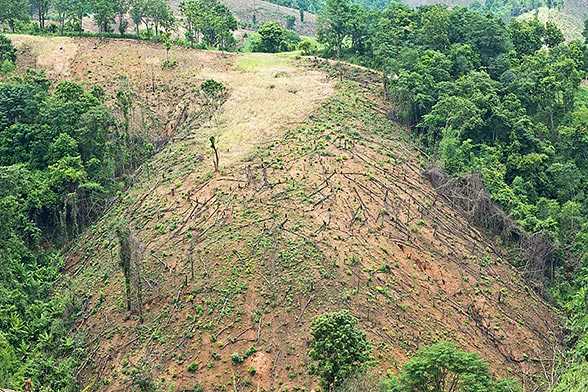Amazon Rainforest in Danger

The latest conflict involving Amazon rainforest is the approval given by Brazil's government in March 2013 to build the Belo Monte dam project. In 2015, a private consortium will start the construction of the world's third largest hydroelectric plant on the Amazon's Xingu River. The dam is supposed to help the country keep up with soaring energy demand from a rapidly expanding economy, but environmentalists and indigenous leaders have strongly opposed the plans. Building hydroelectric dams could indirectly force Indians out of their lands. Many of them live in riverside shacks, and their survival depends upon the protection of the region’s resources.
A Timber Mill on the Edge of Amazon River
Yet this is just the latest in a long line of risks to the precious Amazon. Deforestation for cattle ranches and logging has long taken place, not just by small numbers of local inhabitants looking for a way out of poverty but also by large corporations such as Mitsubishi and Georgia Pacific looking to sign deals to transform land into farms and ranches. Pollution by the mining industry is another factor, both of these resulting in the loss of animals’ natural habitat. The destruction of plant species affects both indigenous people who use compounds from plants and animals for survival and treatment of illness and puts at risk an environment and natural resources which could prove necessary for medical research for diseases such as AIDS, cancer and diabetes.
A Colonist Farm in Former Rainforest in the Peruvian Amazon
The Amazonian jungle has an unparalleled biodiversity, with one in ten of all known species in the world represented within it, and it is simply natural that many voices rally against the spreading commercial activities. Groups like Rainforest Alliance and Amazon Watch Organization mobilize thousands of people from Columbia, Ecuador, Peru, Brazil and Venezuela to put more pressure on governments to slow or halt the destruction of this vital, diverse resource.
The Amazon Rain Forest is the world’s largest surviving tropical forest and is also called “the lungs of the world”, believed to provide up to 20% of the planet’s oxygen. The diversity that still exists there is the result of tens of millions of years of evolution. In this case, protecting the rainforest really does mean saving the planet’s future!